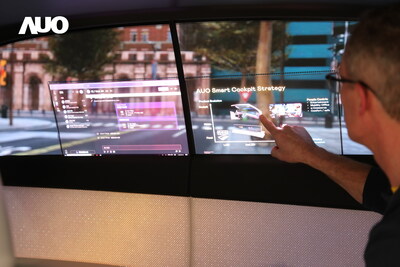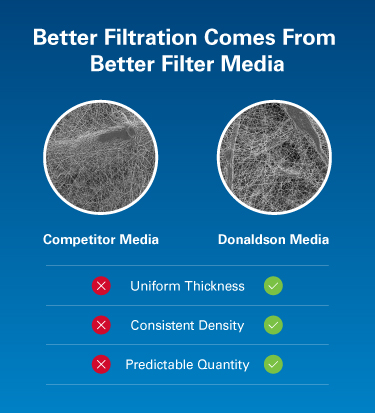

The automotive industry is undergoing a major change as more and more cars are becoming connected. Users are growing accustomed to storing their content in the cloud and expect to be able to access it from their cars. They also want to be able to access their favorite apps while in a car. Screen sharing is providing a shortcut by running an app on a Smartphone and projecting it to the car’s head unit screen. However, it is not a perfect solution, since Smartphone’s native apps are not designed with car safety and ergonomics requirements in mind. The future is with the cloud-based apps that can be accessed from the car as well as from mobile devices.
Luxoft, a leading developer of the in-vehicle infotainment software, recently introduced a connectivity platform called iviLink, which can help make this a reality. iviLink enables seamless two-way integration between in-vehicle infotainment systems like head units, car radios, and rear seat entertainment equipment with Android and Apple iOS-based devices. More importantly, using iviLink, automakers and app developers can quickly and cost-effectively create and adapt mobile apps for in-car use. iviLink’s architecture is designed to not compromise OEM rules and guidelines for car infotainment systems and to preserve the OEM-branded user experience.
In April 2012, Automotive Industries (AI) spoke to Vasiliy Suvorov, VP Technology Strategy at Luxoft, about iviLink. We contacted Vasiliy again to see what the progress was since the iviLink’s launch.
AI: What were the most recent iviLink developments?
Suvorov: Following the growing interest in apps integration among the automotive infotainment community, we released the technology preview of the iviLink connectivity platform last June. The developers can now evaluate iviLink’s symmetric architecture, understand its working model and the numerous usage models it supports. The iviLink Technology Preview v.0.9 includes source code, quick-start documentation, and sample applications. All files are available for free download at www.ivilink.net/techpreview.
AI: What was the initial market reaction to iviLink?
Suvorov: Immediately following the announcement of iviLink, we started receiving a lot of interest from automakers, including the commercial vehicle manufacturers and automotive suppliers, as well as mobile apps developers. iviLink’s open source code is being downloaded numerous times and is receiving excellent contributions from the developer community. Overall, we feel that there is a growing awareness in the market that the users want to extend their Smartphone experience into their cars. This means seamlessly integrating mobile apps to the car environment, and that is exactly what iviLink allows them to do.
AI: Are there any existing implementations of iviLink?
Suvorov: Luxoft is close to starting pilot projects of iviLink implementation with a major North American automaker and with a few European Tier-I suppliers. iviLink will enhance the automotive connectivity experience in a number of ways, including the use of iviLink-enabled apps from Android or Apple mobile devices with the in-car HMI (human machine interface), which adds in-car remote control functionality and head unit replacement capability by mobile devices.
AI: Is it correct that iviLink is designed to benefit automakers specifically?
Suvorov: It’s true that iviLink has clear advantages for automakers, such as the secure, OEM-controlled two-way apps integration and multi-media content sharing that includes cloud-based content. But the iviLINK also carries much broader appeal by offering opportunities to automotive suppliers as well as mobile app developers and mobile device manufacturers. iviLink offers them a competitive advantage by extending multimedia and connectivity functions to the current and future IVI systems. Additionally, iviLink provides a safe and easy way to seamlessly upgrade IVI software without critical impact or risks to the entire system.
AI:. How is iviLink different from competitors’ connectivity platforms?
Suvorov: Most of the offerings out there are really proprietary and closed solutions that are specific to each vendor. The only other community effort is MirrorLink. MirrorLink and iviLink are complimentary and each covers areas that are not covered by the other. For example, MirrorLink is focused on device level connectivity through screen sharing of apps running on connected mobile device while iviLink is focused on application level connectivity and integration and does not natively support screen sharing.
AI: Why did you decide to make it an Open Source platform?
Suvorov: We see how the Open Source is quickly gaining popularity across the industries, which is a major paradigm shift. Developers prefer to download open source software with no strings attached, so they can evaluate it and see if it’s what they need. If they like it, they can upgrade the license and request professional development services. Another vital aspect is the contributions from the community. The quality of the source code can be improved when it’s being contributed to and evaluated by multiple users.
AI: Luxoft is a member of GENIVI Alliance and Car Connectivity Consortium. How does it affect the iviLink development?
Suvorov: At Luxoft, we believe in open standards and the benefits they provide for the markets. This is why we joined the organizations leading the standardization efforts in the car infotainment industry. Luxoft is an active member of GENIVI Alliance and Car Connectivity Consortium (CCC)s. The GENIVI Alliance is dedicated to the creation and promotion of the In-Vehicle Infotainment (IVI) open-source development platform. The CCC is focused on the connectivity between a Smartphone and the in-vehicle infotainment system. We created iviLink to compliment both standards. The feedback received from the fellow members proved invaluable in making iviLink what it is today.
AI: What are the future plans for iviLink?
Suvorov: We are preparing to release the Software Development Kit (SDK) for iviLink. This will significantly enhance the developer’s options and speed up the adoption of iviLink technology. iviLink is already compatible with multiple operating systems (Android, iOS, and Linux) and can operate over numerous serial links (Bluetooth, Wi-Fi, USB and more). The platform is also GENIVI-ready. Starting with version 1.5, iviLink will support HTML5-based remote HMI. Further down the road, we are planning to add dual mode implementation that will allow users to run both the MirrorLink- and iviLink-enabled apps and devices.
Learn more visit www.ivilink.net video http://www.ivilink.net/video/














More Stories
AUO Returning to CES Showcase Next Generation Smart Cockpit 2025
Donaldson Ultra-Web technology aims to set the standard in industrial filtration for cleaner air and cost-savings
Hydrogen’s Role in Decarbonising Sports and Entertainment Events